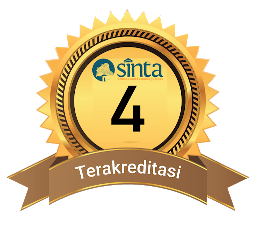Pengembangan Multimedia Interaktif Pada Pembelajaran Kimia Materi Struktur Atom Kelas X MIPA
DEVELOPMENT OF INTERACTIVE MULTIMEDIA IN LEARNING CHEMISTRY ATOMIC STRUCTURE MATERIALS FOR HIGH SCHOOL
DOI:
10.29303/cep.v5i2.3557Published:
2022-11-30Issue:
Vol. 5 No. 2 (2022): Edisi NovemberKeywords:
Multimedia interaktif, struktur atom, kimiaArticles
Downloads
How to Cite
Abstract
This research aims to gain the feasibility of interactive multimedia on the chemical learning of atomic structure materials class X Mipa. This research is a study using research methods research and developmen, the research design used is a 4D model that is limited to 3 stages, namely define, design and develop. This studies became performed at SMAN 21 Surabaya on 33 college students of class X Mipa. This observe used validation instrument sheets, pretest and posttest, student response questionnaires and student observation questionnaires. If the price of the validation end result is ≥61% then it’s taken into consideration valid, the practicality price is ≥61% then it’s taken into consideration sensible and the effectiveness price is ≥61% then it’s taken into consideration effective. The validity of the contents and constructs of 85.6% and 82.92% falls into the class of very valid. Practicality obtained by 96.71% and 95.83% of student observations is considered practical. Effectiveness is obtained from the learning results of students using pretest and posttest questions and obtained pretest results of 21.21% and posttest results of 100% so that there is a difference between pretest and posttest students' grades. This suggests that interactive multimedia atomic structure materials can be used as a medium of chemical learning.
Keywords: Interactive Multimedia, Atomic Structure, Chemistry
References
Andriani, T. (2018). Sistem Pembelajaran Berbasis Teknologi Informasi dan Komunikasi. Journal Of Materials Processing Technology, 1(1), 1-8.
Catur Saputro, A. N., Ditama, V., dan Saputro, S. (2015). Pengembangan Multimedia Interaktif dengan Menggunakan Program Adobe Flash Untuk Pembelajaran Kimia Materi Hidrolisis Garam SMA Kelas XI. Jurnal Pendidikan Kimia Universitas Sebelas Maret, 4(2), 23-31.
Depdiknas. (2003). Undang-Undang Republik Indonesia Nomor 20 Tahun 2003 Tentang Sistem Pendidikan Nasional. Departemen Pendidikan Nasional.
Fau, F. A. (2018). Pengembangan Multimedia Interaktif Sifat Koligatif Larutan Kelas XII SMAN 3 Palembang. Palembang: Universitas Sriwijaya.
Munir. (2012). Multimedia Konsep dan Aplikasi Dalam Pendidikan. Bandung: Penerbit Alfabeta.
Nasihah, M. (2019). Pengembangan Modul Kimia Berbasis Poe (Predict Observe Explain) Pada Materi Laju Reaksi di Kelas XI Madrasah Aliyah Negeri (MAN) 2 Pati. Pati.
Permendikbud. (2018). Kmpetensi Inti dan Kompetensi Dasar Pelajaran pada Kurikulum 2013 UU Nomor 37 Tahun 2018. Kementrian Pendidikan dan Budaya.
Permendiknas. (2006). Peraturan Menteri Pendidikan Nasional Republik Indonesia Nomor 22 Tahun 2006.
Plomp, T., dan Nieveen, N. (2010). Educational Education Research. Netherlands: SLO.
Riduwan. (2015). Rumus dan Data dalam Aplikasi Statistika. Bandung: Alfabeta.
Rocke, A. J. (2020, February). Chemistry. Encyclopaedia Britannica.
Sugiarti, D. (2020). Pengembangan Media Pembelajaran Sifat Koligatif Larutan Dengan Software Adobe Flash CS6 Professional di SMAN 9 Kota Jambi. Repository Universitas Jambi.
Trianto. (2008). Model Pembelajaran Terpadu Konsep, Strategi dan Impelmentsinya dalam KTSP. Jakarta: Bumi Aksara.
Author Biographies
Vina Rachmawati, Mahasiswa
Sukarmin Sukarmin, 2Program Studi Kimia, Universitas Negeri Surabaya , Jalan Kampus Unesa Ketintang Surabaya, Jawa Timur 60231
License
Copyright (c) 2022 Vina Rachmawati

This work is licensed under a Creative Commons Attribution-ShareAlike 4.0 International License.
Authors who publish with Chemistry Education Practice agree to the following terms:
- Authors retain copyright and grant the journal right of first publication with the work simultaneously licensed under a Creative Commons Attribution License 4.0 International License (CC-BY-SA License). This license allows authors to use all articles, data sets, graphics, and appendices in data mining applications, search engines, web sites, blogs, and other platforms by providing an appropriate reference. The journal allows the author(s) to hold the copyright without restrictions and will retain publishing rights without restrictions.
- Authors are able to enter into separate, additional contractual arrangements for the non-exclusive distribution of the journal's published version of the work (e.g., post it to an institutional repository or publish it in a book), with an acknowledgement of its initial publication in Chemistry Education Practice.
- Authors are permitted and encouraged to post their work online (e.g., in institutional repositories or on their website) prior to and during the submission process, as it can lead to productive exchanges, as well as earlier and greater citation of published work (See The Effect of Open Access).






